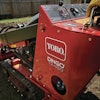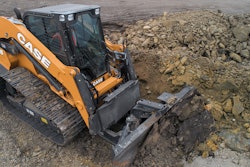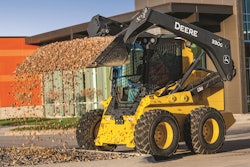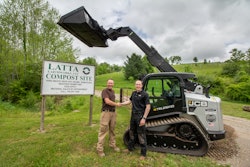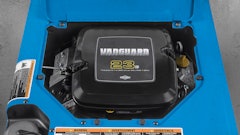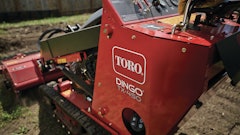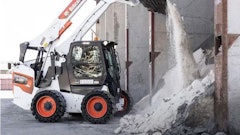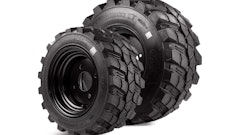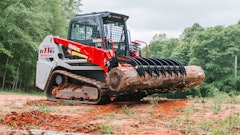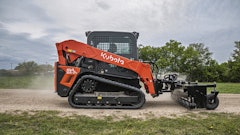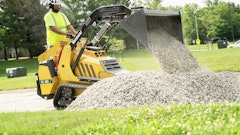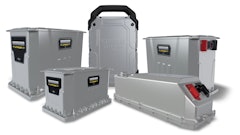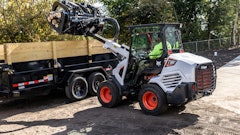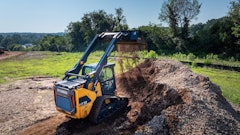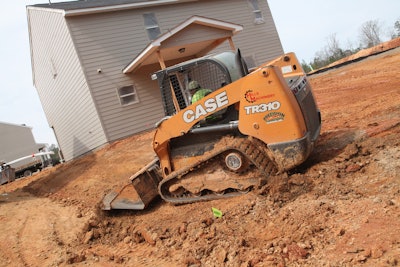
Chapin, SC is going through significant growth. As a suburb to the capital city of Columbia, and as an attractive destination for growing businesses and tech companies, the region is expanding to build home sites and commercial properties in previously undeveloped areas.
It’s a great opportunity for enterprising business owners like Kody Duke of Precision Landscaping. The evolving new home and commercial construction markets have helped push his business to new capabilities and heavier work. As many of the new developments in the area are moving to more secluded and varied terrain — and as more homeowners are placing value on outdoor living spaces — the demand for skilled hardscaping has increased significantly.
“They’re building on harder lots now, harder areas, so retaining walls are definitely more common than they were in the past,” says Duke. “And we’re seeing more interest in outdoor living packages. People really want to have a good space in their yard to grill and have fun.”
As his business has grown, so has Duke’s equipment needs. Long term, he sees his business expanding even more into total site development, serving as a turnkey service provider that can take a site’s earthwork from its original terrain all the way to the finished landscape. As such, his equipment focus has zeroed in on compact track loaders adept at performing both earthmoving and material handling — specifically, large pallets of brick and retaining wall block.
Power and Performance
 Kody Duke, owner, Precision Landscaping
Kody Duke, owner, Precision Landscaping
Precision Landscaping has worked closely with Columbia-based Hills Machinery to standardize on Case TR310 compact track loaders (CTLs) for production and hardscaping operations. The 74-hp loader provides a 3,100-lb. rated operating capacity at 50% tipping load, wider tracks (15.75), higher torque and a breakout force of 8,680 lbs., all packaged in a mid-sized platform. Its radial lift pattern is suited for earthwork, and the rated operating capacity is more than enough to handle large pallets of retaining wall blocks, etc.
The contractor also relies on Case TV380 CTLs for initial pad work and site grading before the landscaping crews come in. Because it's a vertical lift machine, Duke relies on for its truck loading capabilities.“I’d say they have the best breakout force, and pushing power out of any machine in that class, from lifting heavy pallets of block, heavy sod, it never bogs down,” says Duke. “It never has any problem picking up anything we have.”
“It’s a very good machine to get in there and actually dump in the back of the truck — the vertical lift machine is perfect for loading trucks,” says Duke.
Jobsites with the landscaping crews are more crowded than ever — a side effect of residential neighborhoods being built on more challenging terrain is that homes and hillsides and workers are all on top of one another. The visibility of the CTLs stands out to Duke as a factor that keeps his workers more confident, productive and ultimately safe.
“The visibility is unmatched, especially for these tight lots we’re dealing with,” he says. “They’re building houses closer and closer, so visibility is very important to see where the machine needs to be, and not be [in terms of avoiding obstacles]. The visibility’s great. It’s easy to get in and out of, and it keeps them busy. All my crews are happy with them.”
Ease of Control and Service Access
Duke outfits all of his the CTLs with electrohydraulic controls that allow the operator to switch between preferred operating patterns with the touch of a button, and give them the ability to match machine and boom/bucket speeds to their preference and the tasks of the job.
 Precision Landscaping uses a Case TR310 to move block pallets and other materials on residential sites.
Precision Landscaping uses a Case TR310 to move block pallets and other materials on residential sites.
Duke also recognizes the auxiliary power of the Case CTLs as being important. “The auxiliary hydraulic performance is great on these machines,” he says. “We’re trenching in irrigation at every site we’re at. It’s rare that we find a piece of dirt that’s not diggable. We use augers for digging trees, and haven’t had a problem. Auxiliary power is very strong.”
When it comes time to perform service checks at the beginning and end of each day, Duke also appreciates that each machine makes it easy for his field staff to check regular service points.
“It’s very easy to access points that need to be serviced, and obviously, Hills Machinery was a big factor in switching, too, because they stepped up and got us what we needed," says Duke.
Of course, as with any switch in equipment, the choice ultimately comes down to having the proper tool for the task. “Always having the right piece of equipment on the job is a key factor," Duke states. "On every job we have there’s going to be a track loader. That’s the only efficient way it can be done in my opinion. That is the key — having good equipment to get the job done.”

